Aerospace Dreams
The Aircraft of Ben Tanner
Part history, part fiction, I like to think that these designs are technically feasible. They are my might-have-beens, my "What-ifs". I have begun writing a historical novel around them and their designer, Ben Tanner.
- De Havilland DH.88A Meteor: the "MacRobertson Interceptor"
- De Havilland DH.99 Vampire
- RAAF Twinfire HF Mk V-V and VIII-VIII
- Supermarine Twinfang S Mk 31-32
- General Dynamics XF-28
De Havilland DH.88A Meteor: the "MacRobertson Interceptor"
“The MacRobertson Interceptor” According to an American contemporary, the British Government will seriously consider the adoption of the winning machine in the England-Australia race for modification as an interceptor fighter. – Flight, 7 June 1934, p.560.
The MacRobertson Air Race was won by de Havilland Comet G-ACSS Grosvenor House. The Air Ministry did indeed buy the aircraft afterwards, gave it military registration K5084 and had it painted standard silver with RAF markings. It was then flown to Martlesham Heath for evaluation. The fighter idea was dropped because by now two new monoplane interceptors were taking shape, powered by the equally new and far more powerful Rolls-Royce PV-12 engine - to become familiar as the Merlin-powered Hurricane and Spitfire. De Havilland proposed a fast bomber version, which was also turned down at the time but would eventually resurface as the famous Mosquito of World War II.
But I knew nothing of the Comet's history beyond the original race, when I was walking past my local model shop one day and spotted an Airfix kit of one in the window. It occurred to me just how similar in size it was to the Hurricane and Spitfire, which had been under development at the time of the race. And it was obvious from the kit artwork that the Merlin would fit the Comet like a glove. I wondered "What if?", went in and bought the kit.
So here is K5084 after undergoing "modification as an interceptor fighter" to become the prototype de Havilland DH.88A Meteor:
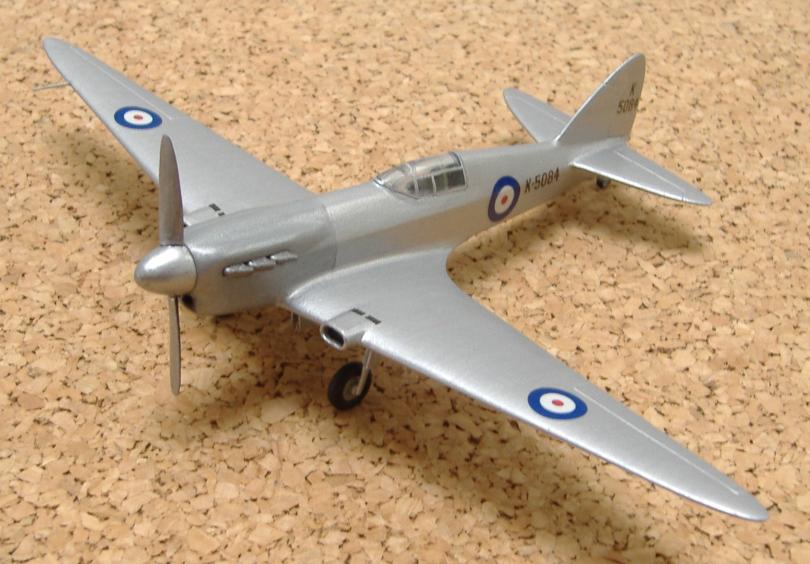
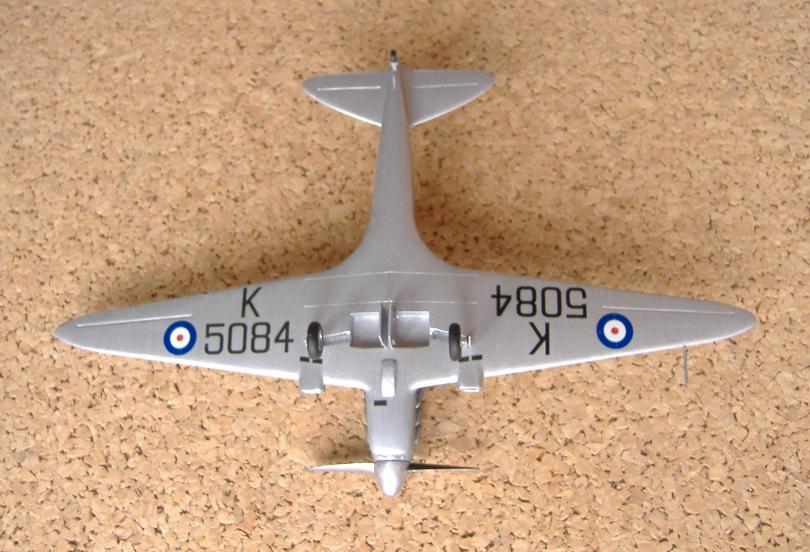
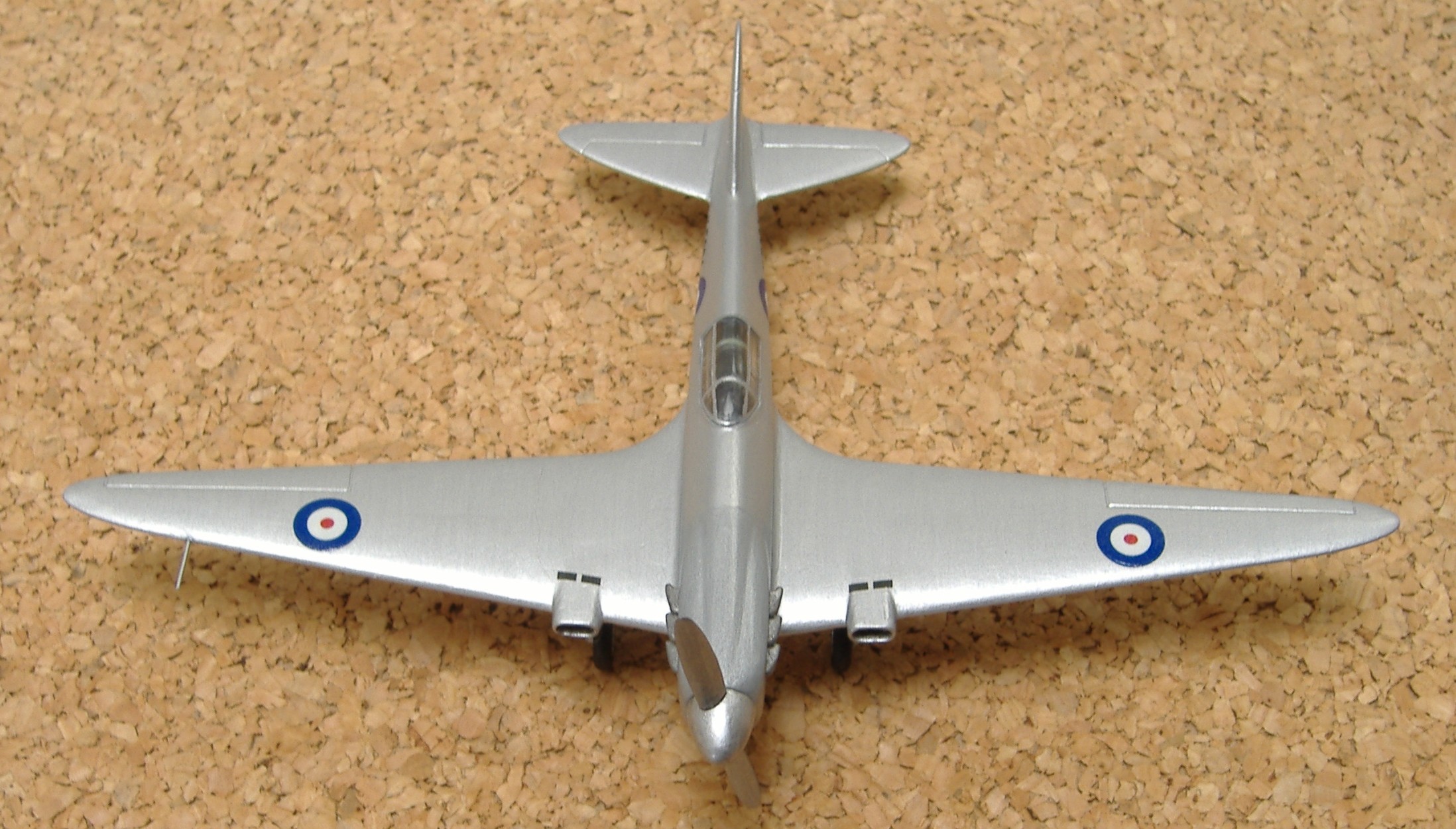 |
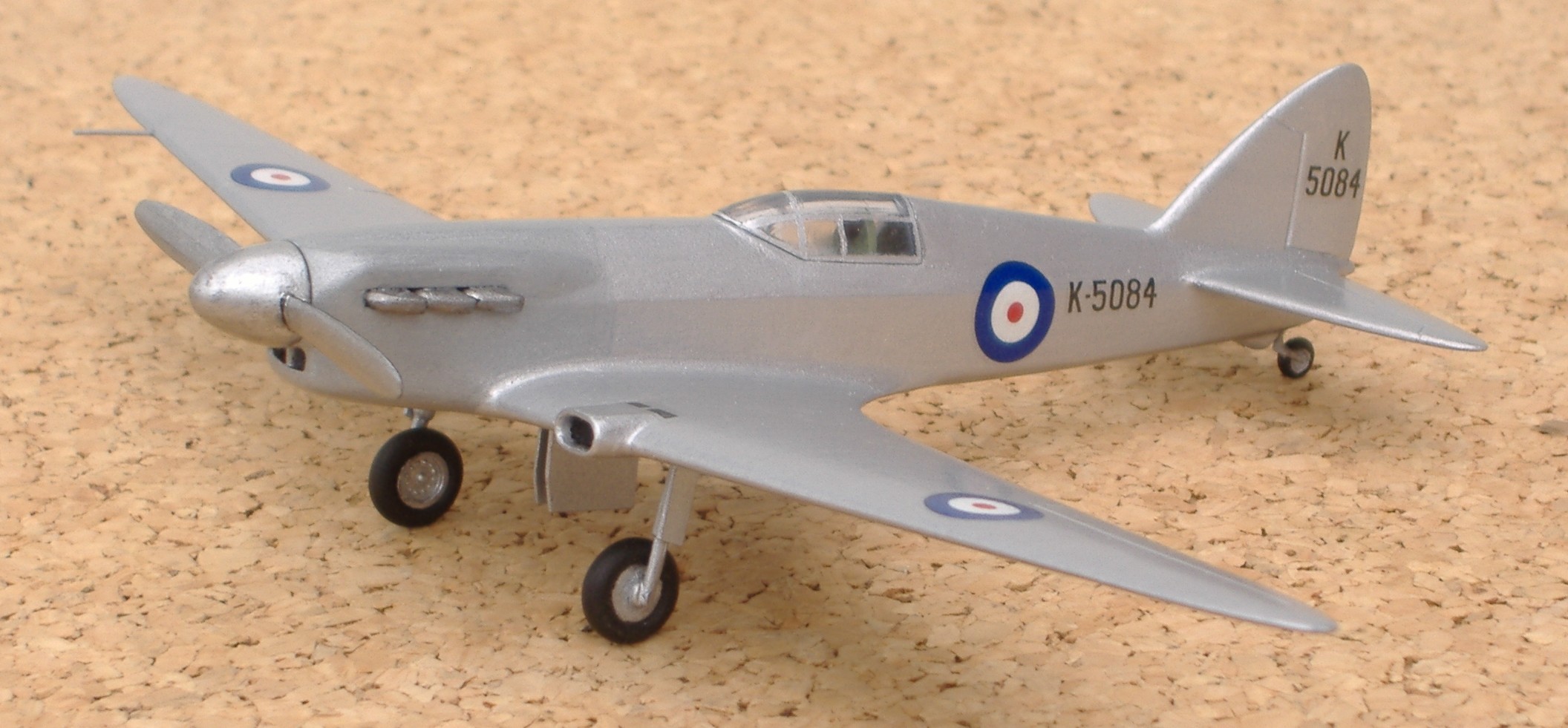 |
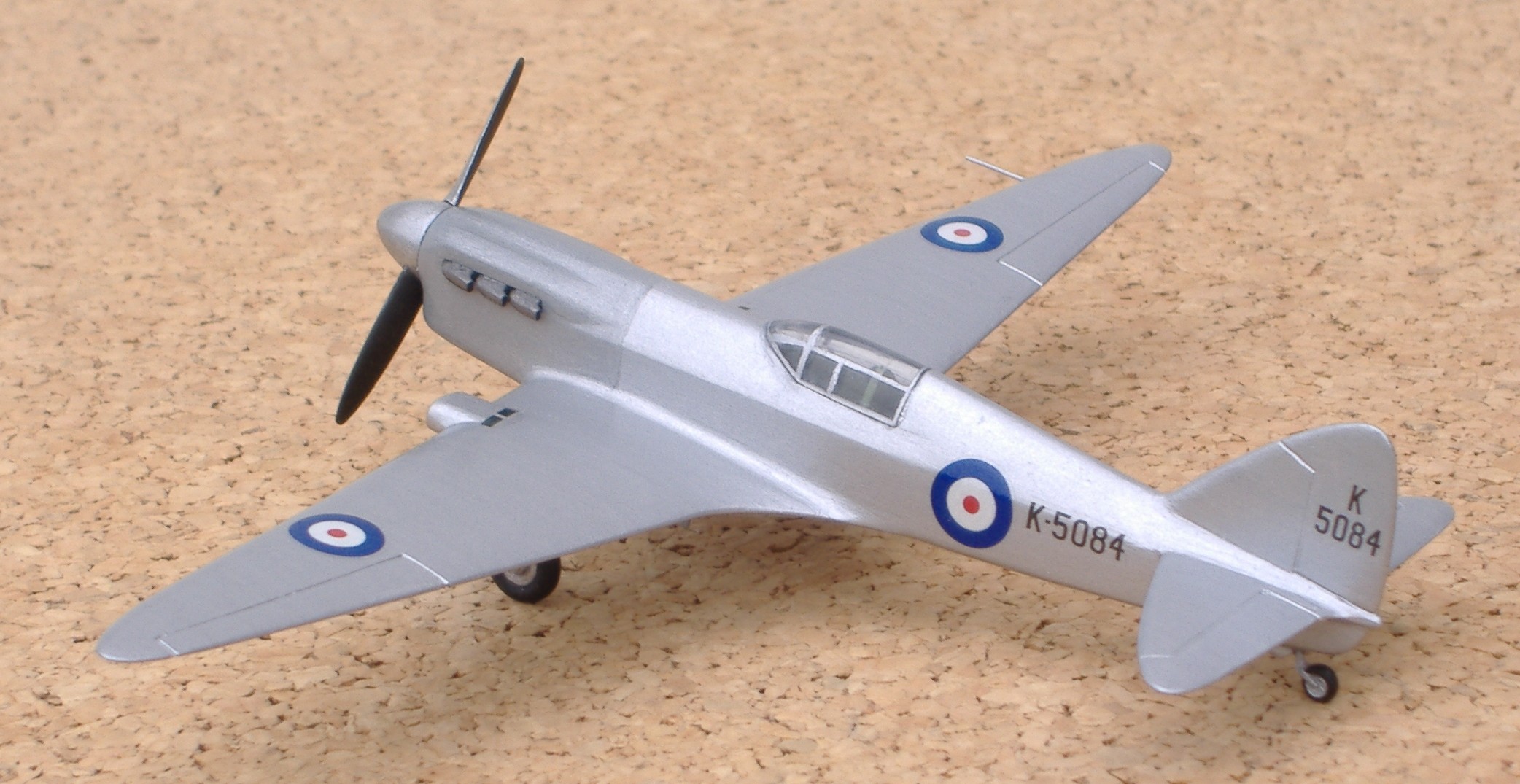 |
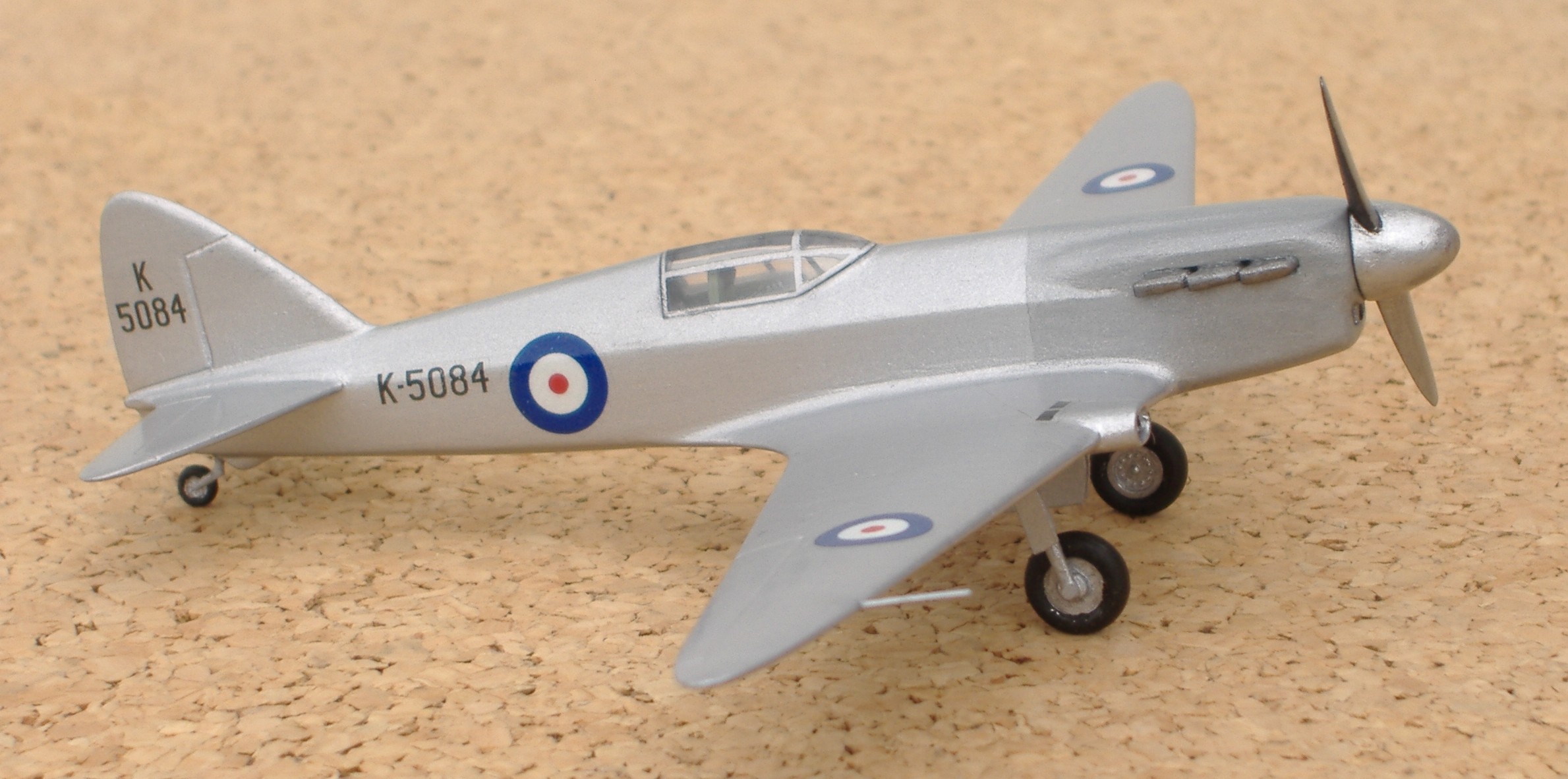
| 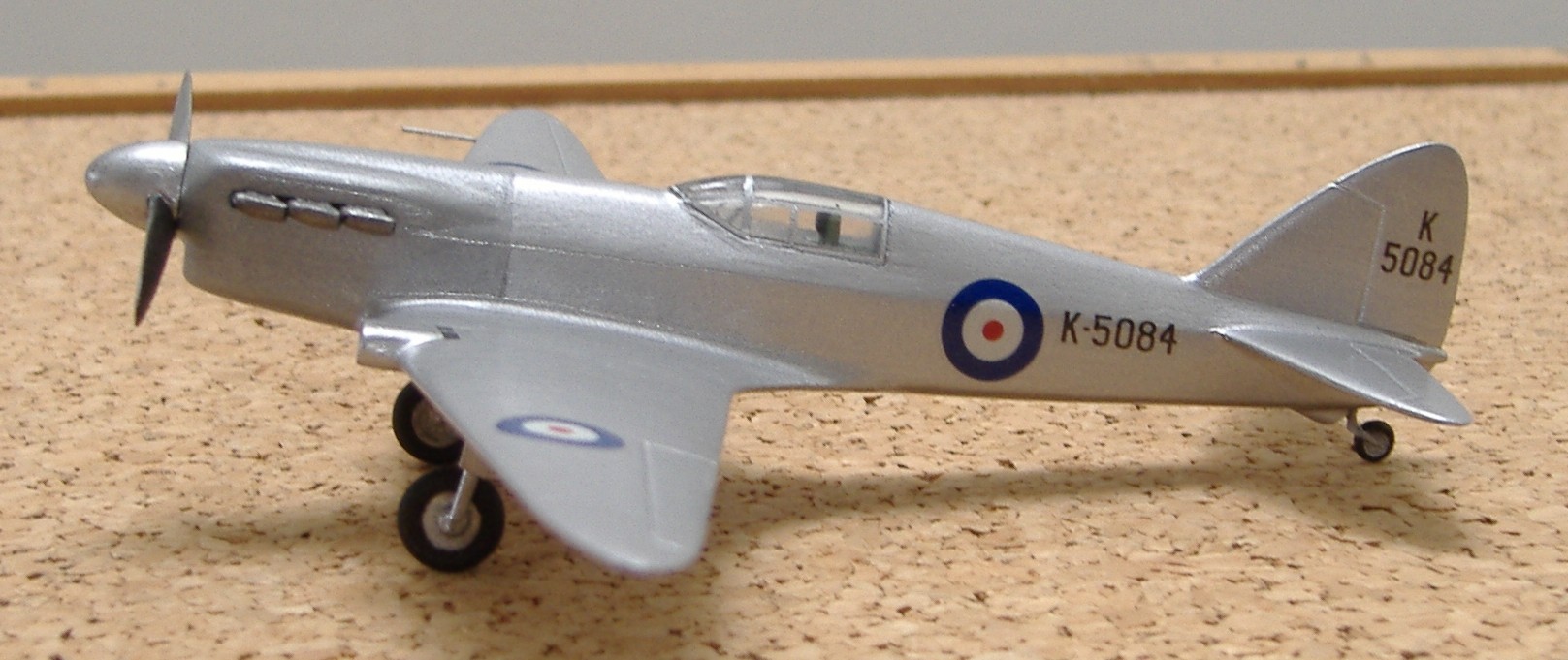 |
Its two Gipsy Sixes and the forward fuel tank have been replaced by a single Merlin. The wing is modified with one spar repositioned, not only to accommodate the now inward-retracting undercarriage wheels, but also to slip through past the engine firewall without positioning the engine off-balance. The original undercarriage attachment points on the inboard side are re-used but reinforced for the single-leg design. Behind them the landing flaps have been extended outboard. Note the "proto-Mossie" style wing-mounted glycol radiators, re-using the attachment points for the old engine firewall and mounting frame, and the faired-over rear seating position.
Note also the de Havilland-style chin intake for carburettor and oil cooler. The small underside bulge in front of the wheel wells is the engine air intake duct, showing how snug the fit of the Merlin had to be. The offset rectangular vent in front of that is the oil cooler air outlet; similar outlets under the wing-mounted radiators mirror the Comet's arrangement on top, to double the airflow capacity of the radiator exit ducting.
Top speed was almost doubled, to slightly above that of the contemporary Spitfire prototype K5054 with the equivalent development Merlin. This was due in part to the ruthless reduction of frontal area being carried through from the racer to the interceptor. Manoeuvrability was less due to the higher wing loading and greater span. The propeller seen here is the last fixed-pitch example fitted before de Havilland replaced it with a prototype variable-pitch unit which would further increase top speed. It is perhaps the main reason why K5084 beat Spitfire prototype K5054 (Yes, the registration numbers really were that close!) in the speed stakes, as at the time the RAF still had the mindset of the fixed-pitch era and the Spits and Hurries would not receive the benefits of variable pitch, in three-bladed form, until some years later.
In the event, the Meteor came just too late and the early successes of the Hurri and Spit meant that a third option was not needed and it was canned. Changes planned for the production version at the time of cancellation included eight Browning .303 gun positions (three in each wing and two below the engine on either side of the air intake), further repositioned landing flaps and modified wing outer sections to address the Comet's appalling stall characteristcs.
This was the model that inspired my historical novel, as yet only half-written, and the character of Ben Tanner. It was while researching the history of the Comet that I stumbled not only on K5084 but even on the MacRobertson Interceptor, discovering how astonishingly close to the truth I had come. It went on to win its class and the Mushroom Models Trophy at the IPMS National Championships, 2021.
De Havilland DH.99 Vampire
The de Havilland Aircraft Company was in a privileged position at the start of WWII, making both aircraft and engines. Geoffrey de Havilland and his engine designer Major Frank Halford were invited to watch a flight of Britain's first jet aeroplane, the Gloster "Whittle", and were then asked to design their own jet fighter and engine. Halford's H-1 engine proved a winner and was borrowed by both Gloster and the Americans to get their prototype fighters into the air, even before de Havilland's odd little twin-boom fighter was ready to receive it.
In the middle of all this, the DH.99 designation got patched onto several designs including the first, all-metal stab at the fighter which later became the part-wooden DH.100 Spider Crab and then the DH.100 Vampire.
Meanwhile de Havilland's old pioneer colleague and predecessor in his first job at Farnborough, J. W. Dunne, got back in touch to lobby for a tailless, swept-wing fighter of the type he had once made his own and which had been further developed by G.T.R. Hill with his Pterodactyl series until work was stopped in 1934. It was known that Germany was working on just such a project, which would emerge as the operational Messeschmitt Me163 Komet rocket fighter. DH would respond to the Komet with their own tailless jet, the DH.108 Swallow, after the war was over.
What if DH had followed up on Dunne's initiative and launched a tailless jet project some four years before they actually did so, updating Hill's work and in the middle of all the naming muddle designating it as yet another DH.99 hopeful? The result might well have looked something like this, its small twin fins earning the nickname "vampire claws" and making it even more obviously a Vampire than Chief Designer RE Bishop's competing design, which won the day and stole the name:
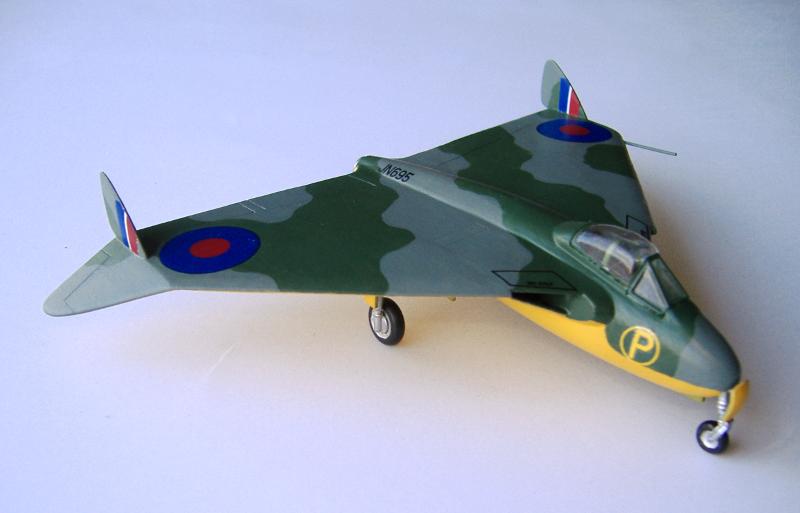
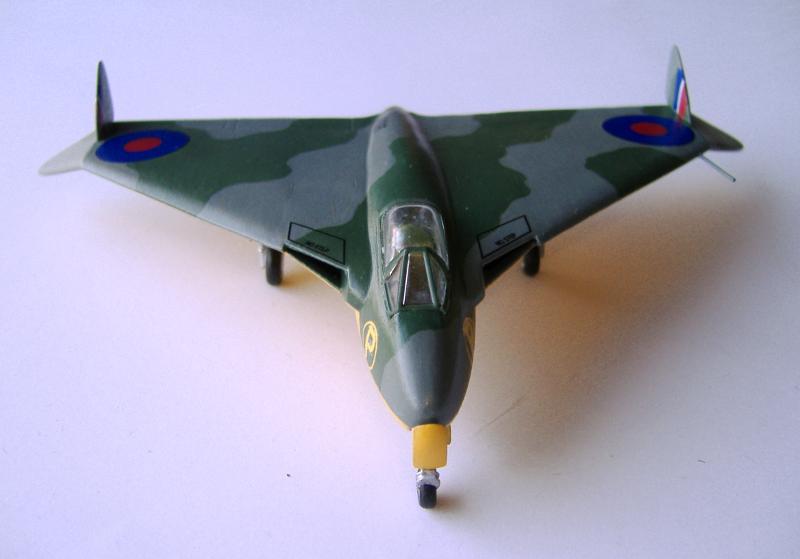
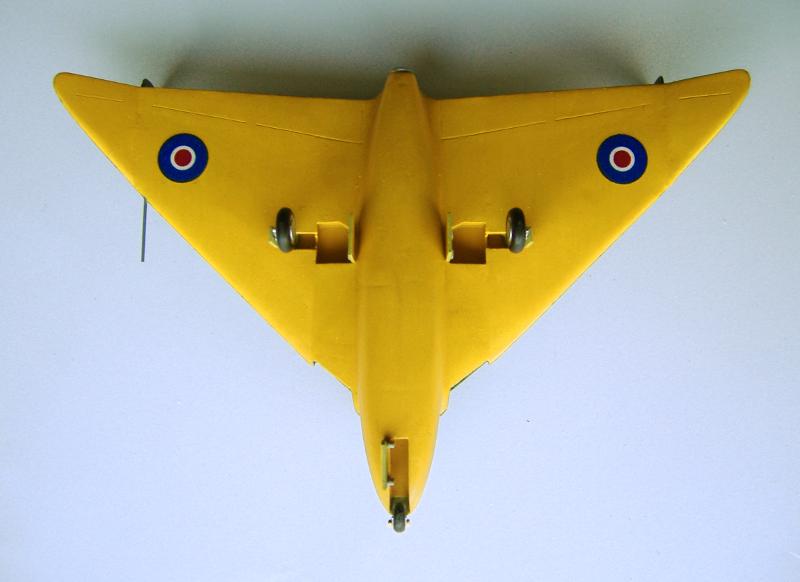 |
It had much the same fuselage but a near-delta wing. It was in fact de Havilland's preferred design, and they had pressed ahead with it in order to parallel Halford's H.1 engine development and get something flying before the Ministry could get its act together. It was unofficially named the "Vampire" because its small twin fins were colloquially referred to in the design office as "vampire claws". After the Gloster "Whittle" it was only the second British jet to fly, providing Halford with valuable high-speed flight data that no other aircraft was able to. Despite all this, the Ministry's abiding mistrust of tailless types led to the selection of the twin-boom submission. They first named it the "Spider Crab". However, when this epithet was found to be a derogatory one dropped on it by a disgusted DH design office, they backtracked and stole the Vampire's name.
Tanner's design draws on the work of JW Dunne, GTR Hill and Alexander Lippisch. Turned-down wing tips and twin fins each have their advantages and disadvantages. The unique configuration of the original Vampire was designed to get the best of both worlds. The prototype had an unusually varied set of control surfaces. Internally, the control linkages could be adapted to vary the way in which they interconnected and synchronised during flight. The idea of this was to make comparative studies and discover the most effective arrangement for combat but, with the order passing to the other design, only the early engine test programme was ever carried out.
The front fuselage and some other bits of this 1:72 model come from a Frog Vampire. The rear fuselage and some of the wing structure come from a lousy rip-off of an Airmodel DH.108 Swallow vac-form that I was once conned into buying. Other bits are scratchbuilt. Essentially I built a supporting frame and covering skin to the wing, much like the real thing. There is a girder running right through the engine bay, behind the undercarriage. Used a mix of plastikard and hacked-about vac-form bits for most of all that. The paint job is a bit dodgy, my camera certainly bends the truth even if it doesn't lie! Most decals are home-printed, the P symbols sent to me by a very kind fellow modeller.
In the event, the Ministry chose Bishop's twin-boom version as the safer bet. Friction in the deisgn office became so intense that Tanner was posted off to Australia to help set up Mosquito production in a new factory there.
RAAF Twinfire HF Mk V-V and VIII-VIII
On the same day that Japan attacked Pearl Harbour, it also bombed Darwin and Singapore. To help in the defence of Australia, three squadrons of Spitfire Mk VCs were shipped out, the pilots including two RAF veterans from the African campaign; Clive "Killer" Caldwell commanded the wing in defence of Darwin, with RM "Bobby" Gibbs as his sidekick. They were later re-equipped with Mk VIIIs in the Pacific islands, where Gibbs adopted the famous "Sharkmouth" paint scheme before the two partners in crime, fed up with General MacArthur relegating them to shooting up farm animals so his All-Amurrican heroes could take the glory of battle, headed up the notorious and successful Morotai Mutiny. At much the same time they were caught running a booze racket to supply the Yanks there. Caldwell was cashiered for the smuggling, but Gibbs got off as he was only "following orders".
In the absence of Supermarine interest, and of official RAAF support, suppose that engineers at Australian-American deep repair depot ARD 14, crossed paths with Tanner on his way home from the Mosquito project, and he offered to knock up some Twinfires out of the "written-off" machines they already had. They set him up in the same secret hidey-hole as the booze stash. The serial No. identities of the various airframes in these models have been carefully researched - they were all official write-offs, sent to 14 ARD or a nearby satellite) for breakup as spares.
First off the line was a one-off "Mk. V-V (five-five)" for the Darwin campaign. The big problems with the Mk V Spitfires were its short range and reaching the altitide the attackers flew at. The V-V was therefore optimised for range and altitude, at the expense of manoeuvrability. That required a high aspect ratio for the wing, so high that the strycture was barely stiff enough. Fuel tanks in the centre section and unoccupied cockpit replaced half the armament and one of the pilots, so takeoff and landing speeds were little changed. Other subtle design features seen in the model include outboard elevator balances and twin trim tabs, each with twin actuators. A standard 30 gal. "slipper" drop tank could be fitted beneath each fuselage.
Caldwell insisted on flying it himself, christening it his "Wonky Wonder". When, on 17 August 1943, he historicallyshot down a Mitsubishi Ki-46 "Dinah" reconnaissance plane as it headed out across the Timor Sea for home, it was of course in his Twinfire and not a standard machine.
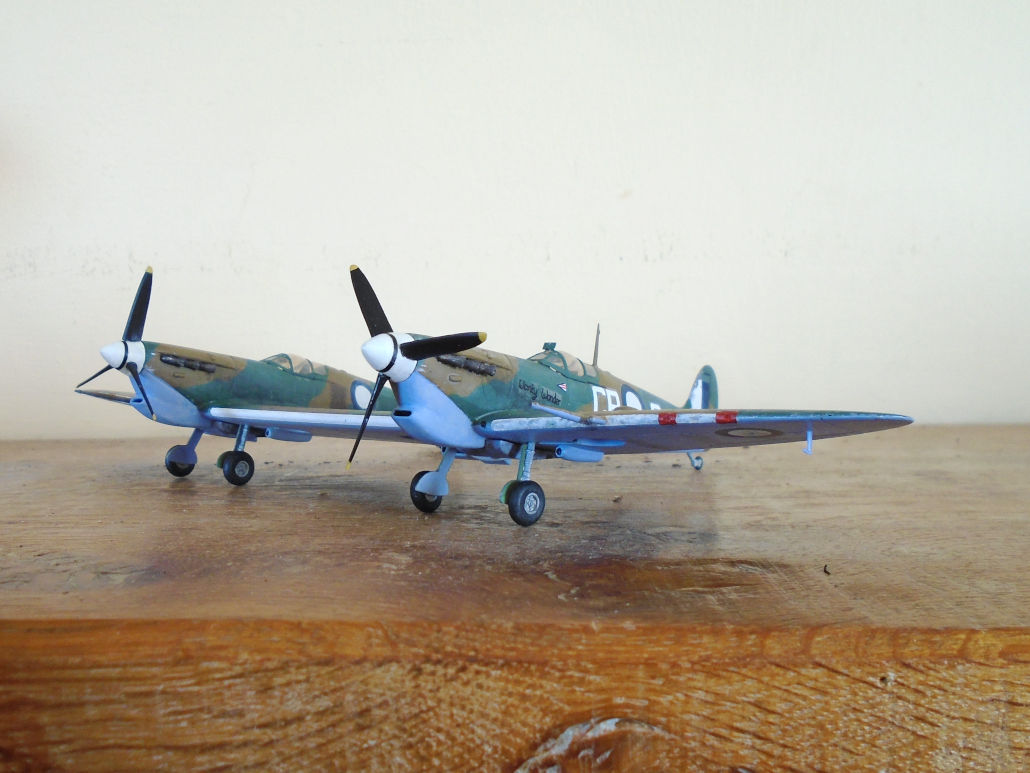
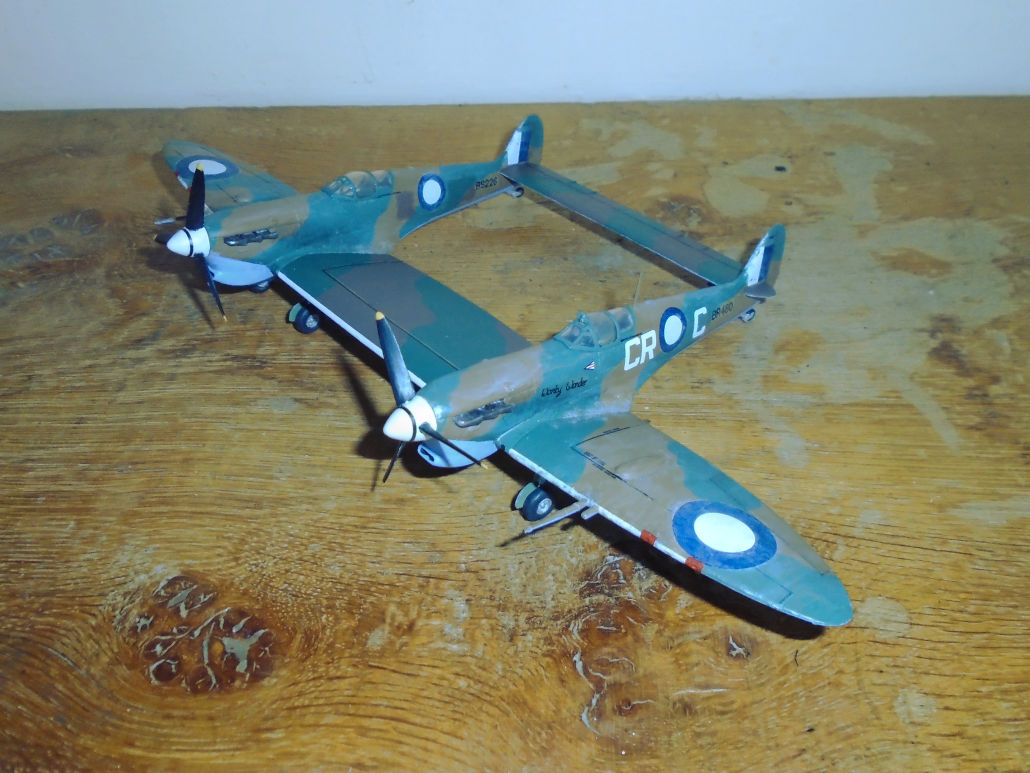
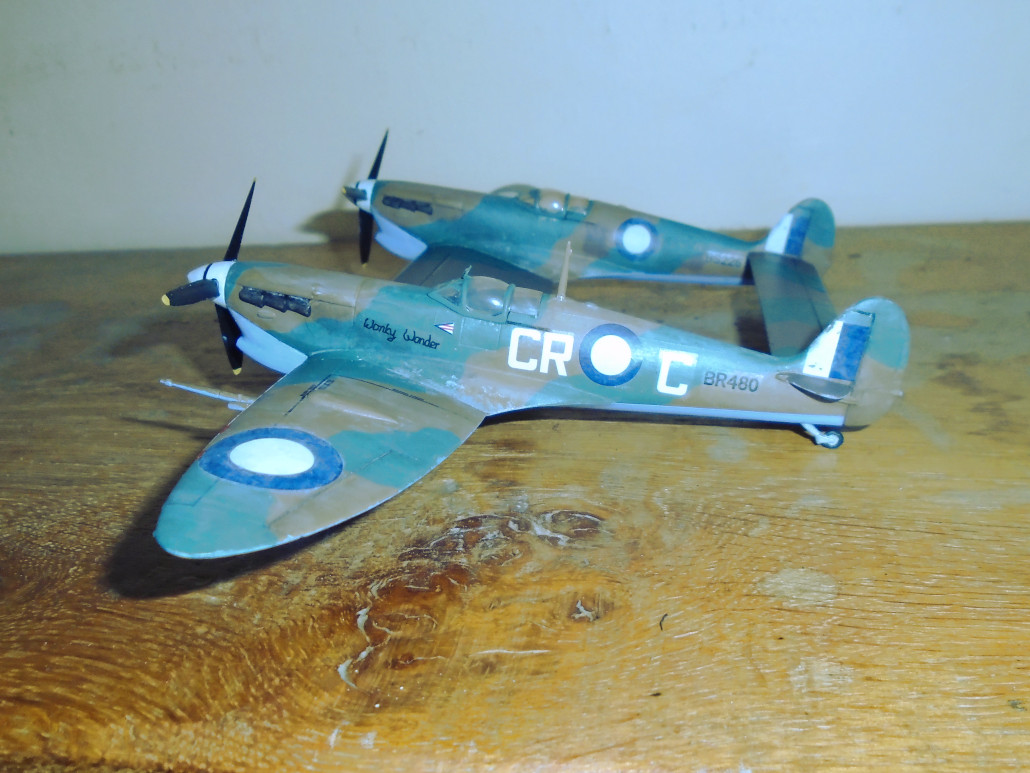
The ageing Spits were by now being replaced with the Mk VIII, and the focus of battle moving to the Pacific islands. 14 ARD set to on the next batch. The VIII was an altogteher more powerful and tough machine, with greater range and altitude; the standard drop tank was increased to 90 gal. The span of the VIII-VIII centre section could be reduced by 1 ft (0.3 m), creating a more realistic fighting airframe. However the Mk VIII ailerons had been shortened, and ther wings had to be adapted to take the longer Mk V type to maintain the improved manoeuvrability. Takeoff run and range were helped by extended wing tips, which were made detachable to prevent mishaps should they break off during combat.
Two machines were delivered, and flown up to Morotai where the squadrons were based. Caldwell, now Group captain, was grounded before he could fly his in anger. Gibbs, replacing him as Wing Commander, had adopted the sharkmouth livery of 457 Squadron, so his Twinfire was embellished as seen here. He flew his "Metal Mossie" on several missions but scored only one unconfirmed kill.
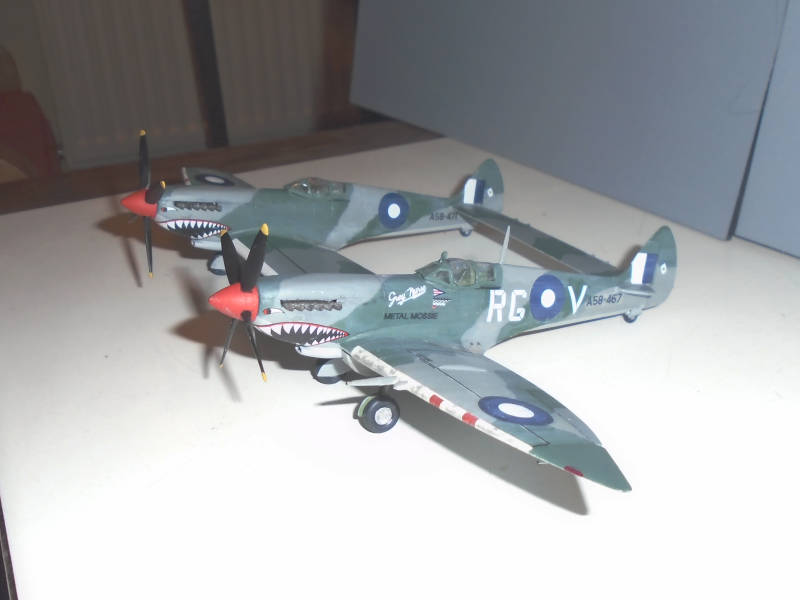
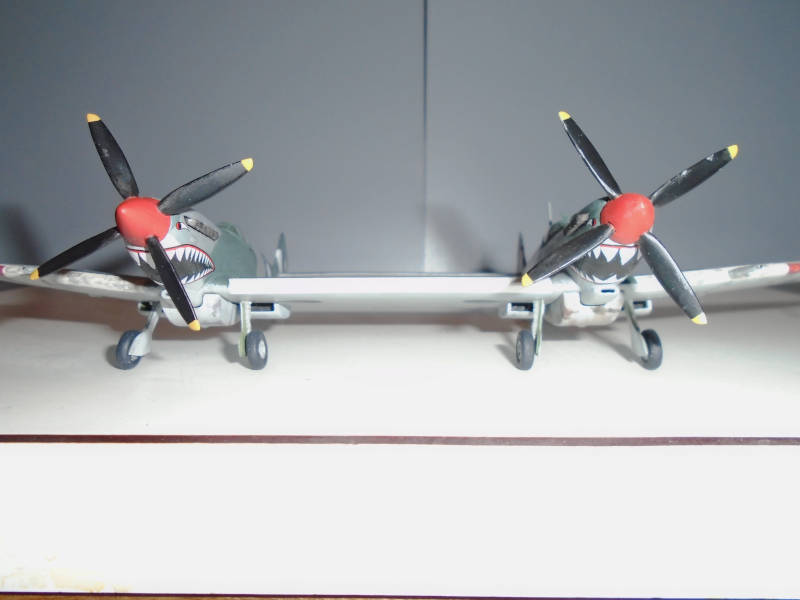
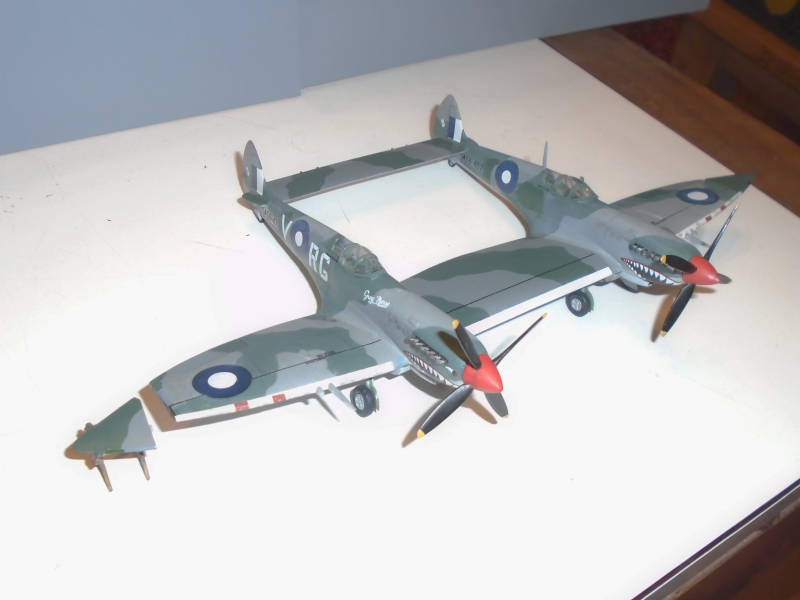
These two models both won Commendations at the 2022 IPMS National Championships.
Supermarine Twinfang S Mk 31-32
Back in UK a couple of years after the war ended, Tanner happened to call in on some old mates from the Twinfire days, who had also come home and picked up work at Supermarine. He foiund them despondent: its replacement, the Spiteful, had just been cancelled. Its Naval variant, the Seafang, left behind a couple of short pre-production batches (about a dozen each, as I recall) of the F Mk 31 and the ultimate in the Spitfire line, the FR Mk 32 with a mean-looking six-bladed contra-prop. Standing in front of them, pretty much readied for delivery, with his old mates now awaiting their redundancy notices, someone asks, "just how fast can one of these things go?"
Tanner remarks idly that "Two would be even faster. You know, I could bolt a couple together so we can find out."
"Well then, what have we got to lose?" And the stage is set. A very different design brief from the others!
The best option turned out to be to use the Mk 31 wing and fuselage, as they had not been reinforced for carrier landings and were lighter. The more powerful contra-prop Griffons from the Mk 32 could then be bolted on the front. As an out-and-out speed machine, Tanner dubbed it the Twinfang S Mk 31-32.
Armament, the heavy arrester hooks and one cockipt were stripped out of the chosen machines. With only a modest fuel load needed, their maximum weight came down, so wing area could be much reduced. One of the undercarriage legs could then be removed, further reducing weight and providing a convenient bay for all the interconnects between the two aircraft's systems. The gun ports were faired over and Spiteful-style tailpieces made and bolted on, an irony as the Mk 31s had originally been converted from cancelled Spitefuls. And so it went.
Readied for flight just as the grapevine warned of the imminent redundancy announcement, the Twinfang took off on what would inevitably be its one and only flight, with no time even for a quick paint job. Tanner clocked up a highly unofficial speed of 507.4 mph – a world record for the day. Diving back down, the plane emitted an almighty warbling roar "like", as one journalist put it, "the Jabberwocky in mortal pain." It is believed that the tips of the propeller blades had briefly gone supersonic. By the time the duty officers could do anything about it, he was back on the ground and accompanying his mates to the nearest watering-hole.

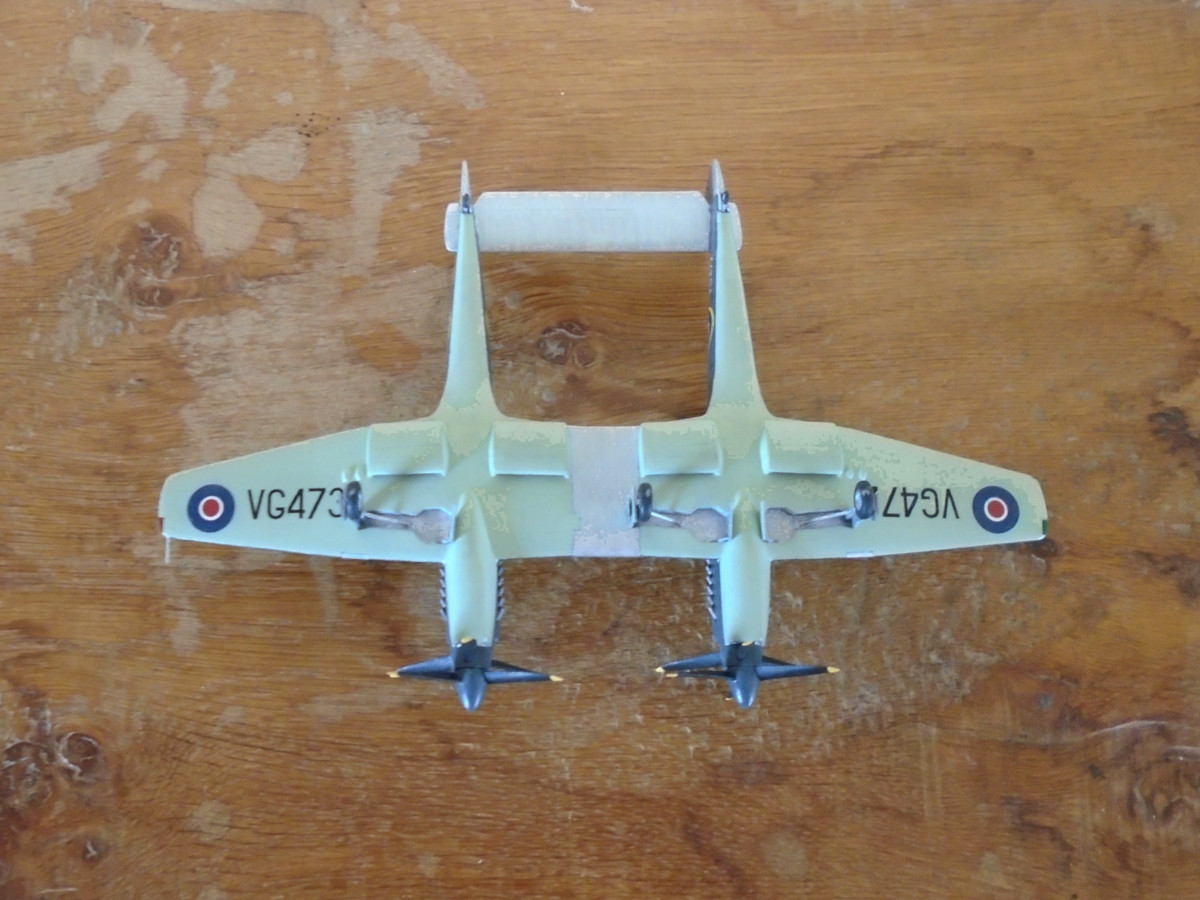
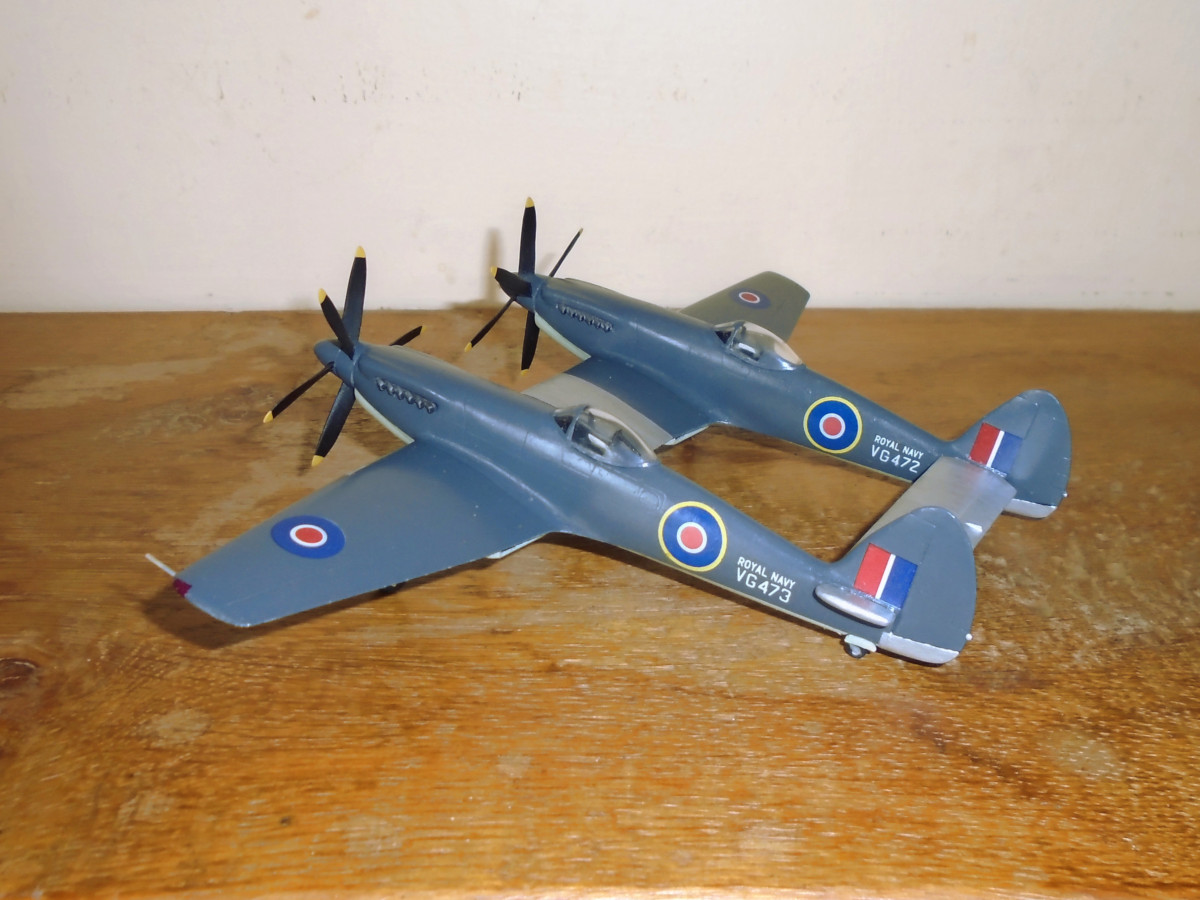 |
 |
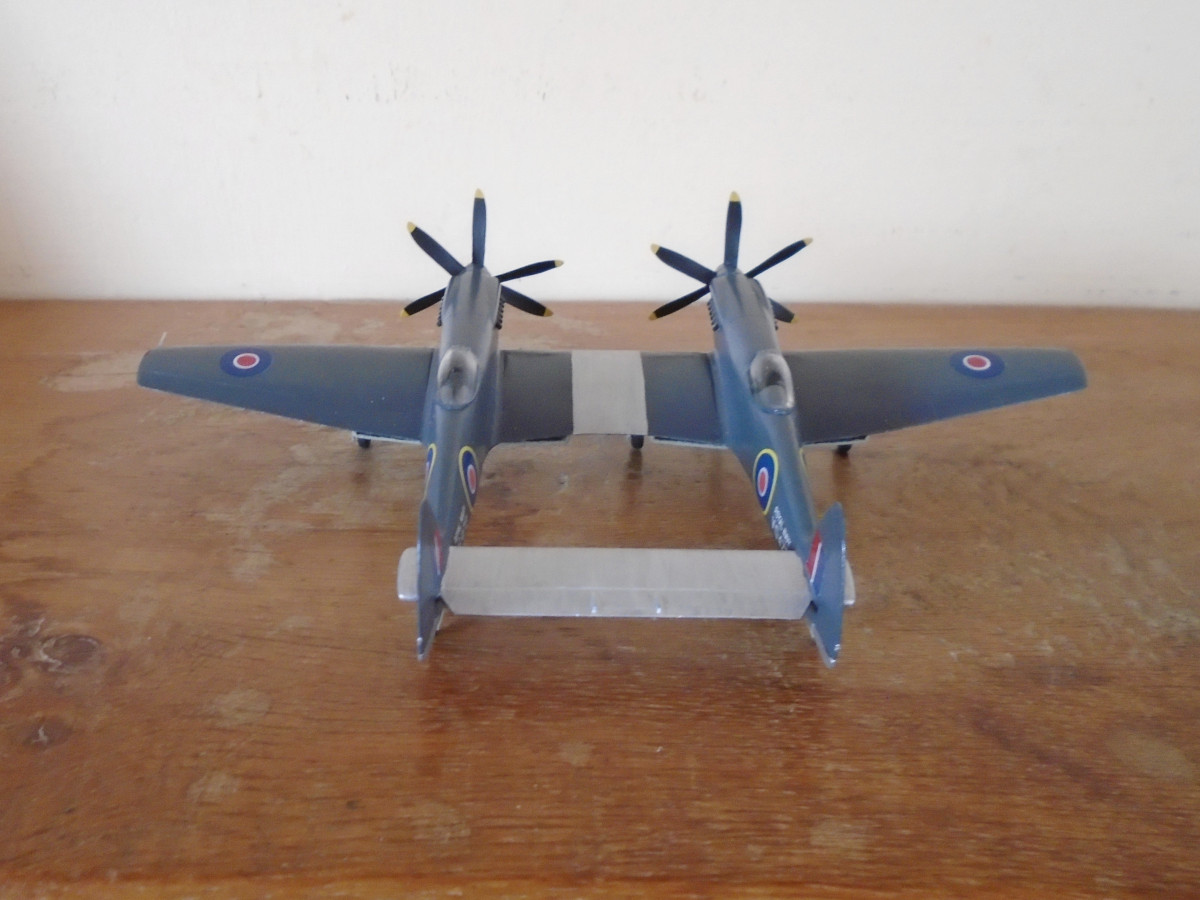 |
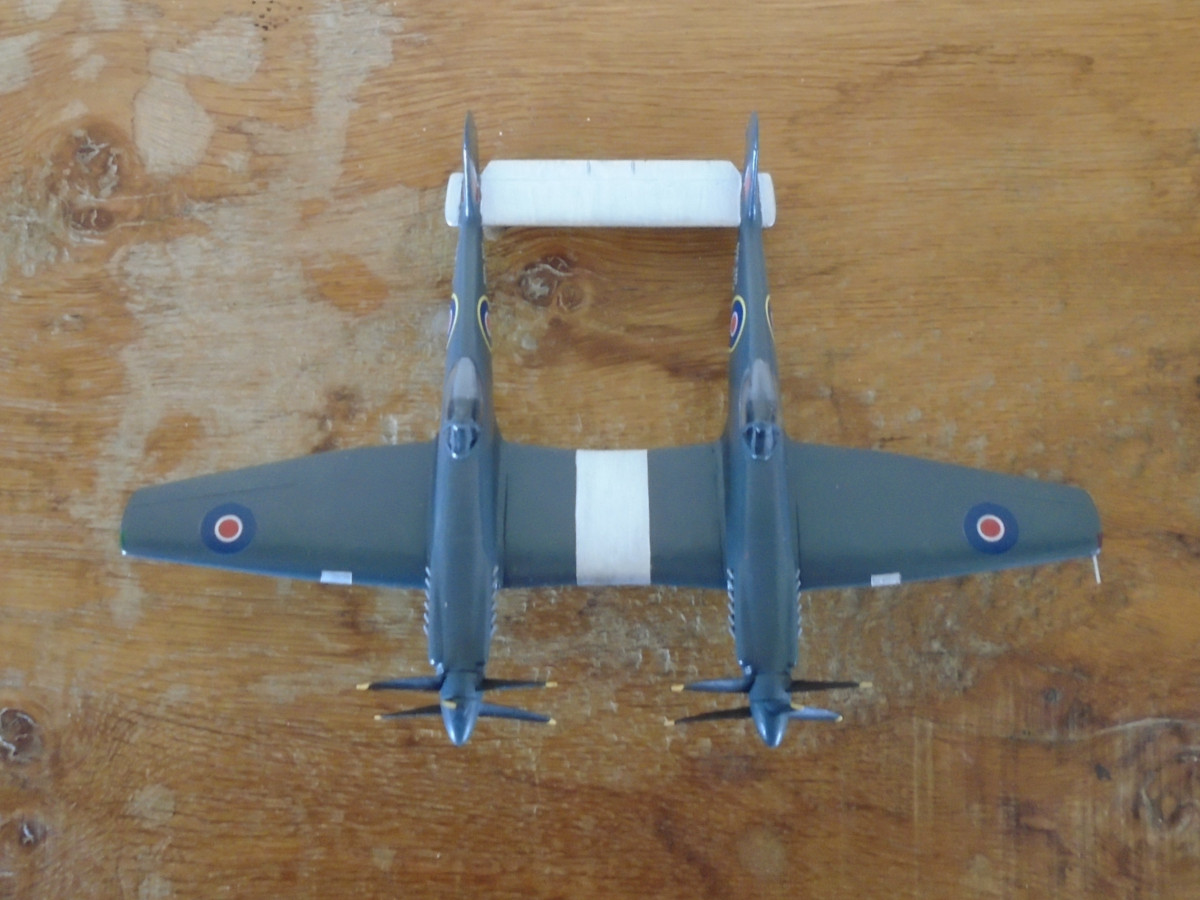 |
General Dynamics XF-28
Not really sure if this is one of Tanner's; I have no record of him working in the US. But I have included it anyway.
First appearing in the 1970s, the General Dynamics F-16 Fighting Falcon was a revolutionary design, not only for its "fly-by-wire" computerised flight systems but also for its blended-body aerodynamics and agility. In Sweden, the Saab Viggen's equally revolutionary canard delta wing had also made international waves.
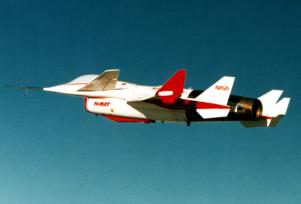
The real Rockwell HIMNAT
Once the General Dynamics F-16 was out of the design offices and into the air, thoughts turned to the next generation of CCV (control-configured vehicle). Saab's canard Viggen had inspired a young Burt Rutan to take aircraft design by the scruff of the neck and start shaking it vigorously. A core design concept was developed by NASA, comprising a canard layout with near-delta planform and the new "Whitcomb winglets" on the wingtips. Two complementary projects were sanctioned, a research drone and a prototype fighter. The Rockwell Highly Maneuvrable Aircraft Technology (HIMAT) was built as an unmanneed drone in order to reserach the high-risk extreme manoevres which the configuration made possible, and first flew in 1979. The similar-looking but larger and manned General Dynamics XF-28 fighter prototype was rolled out that same year but did not take to the skies until 1980. Conceived as a low-cost development of the F-16 it had 30% parts commonality - a remarkable achievement considering their very different forms.
Over in Britain, the success of the MRCA European collaboration was far from guaranteed. With secret government backing - and it had to be top secret to avoid upsetting our European partners in the MRCA - BAC, soon to be merged in the creation of British Aerospace, were looking at a fallback project. It had to be put together in a short space of time, because the Brass Hats were edgy that the untried idea of wider European collaboration should not be risked unless and until we had demonstrated a rock-solid fallback. Time was of the essence. A license-built American design appeared to be the only way out and the XF-28 prototype was purchased for evaluation and modification to meet British requirements. In the event MRCA went ahead as the Panavia Tornado and the secret fighter was scrapped. The design project itself rumbled on, eventually to emerge as the British Aerospace EAP demostrator, which in turn spawned the Eurofighter Typhoon.
The model shows it with experimental small forward winglets fitted by BAC below the main ones. (the historians among you will know that Whitcomb's original designs involved several winglets on each wingtip.) They are unpainted, showing their carbon composite frames and light alloy access panels. No UK markings were applied, so that in the event of discovery they could deny that it was a British project.
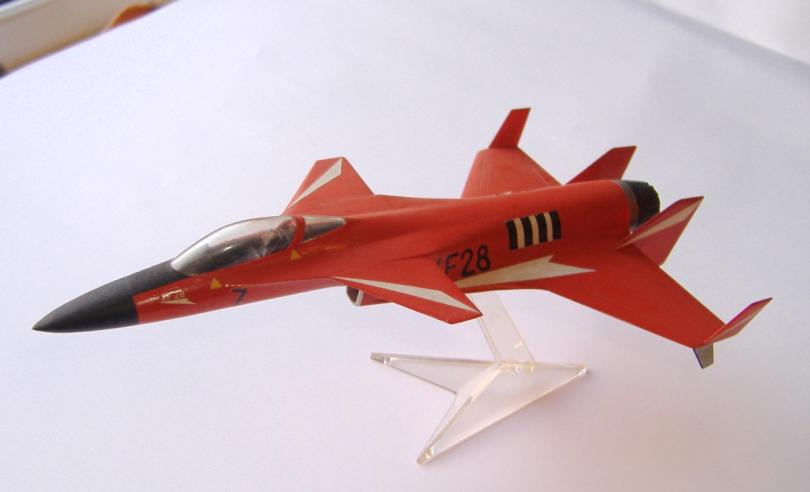
This model arose when I bought a kit of the new F-16, back in the mid-1970s, and made it up in pristine white plastic to show off its revolutionary design. But the close-coupled canard of the Viggen also impressed me deeply and I thought, "Why didn't General Dynamics do that?" I could not resist going out and buying a razor saw....
The model won me the odd prize and even found its way to the IPMS national competition finals in 1981 (though it is nowhere near prizewinning quality, I can assure you!).
Meanwhile HIMAT, a real project, flew. When the design was released, to my astonishment it was effectively a small-scale prototype of my XF-28! It was this resemblance that prompted the first part of my backstory. The UK connection has been added after hearing about Tanner's work, but I still have my doubts about that. I may be mixing up two quite different aircraft projects: historians of Whiffland can be as fallible as those of the real world.
Updated 10 Apr 2024